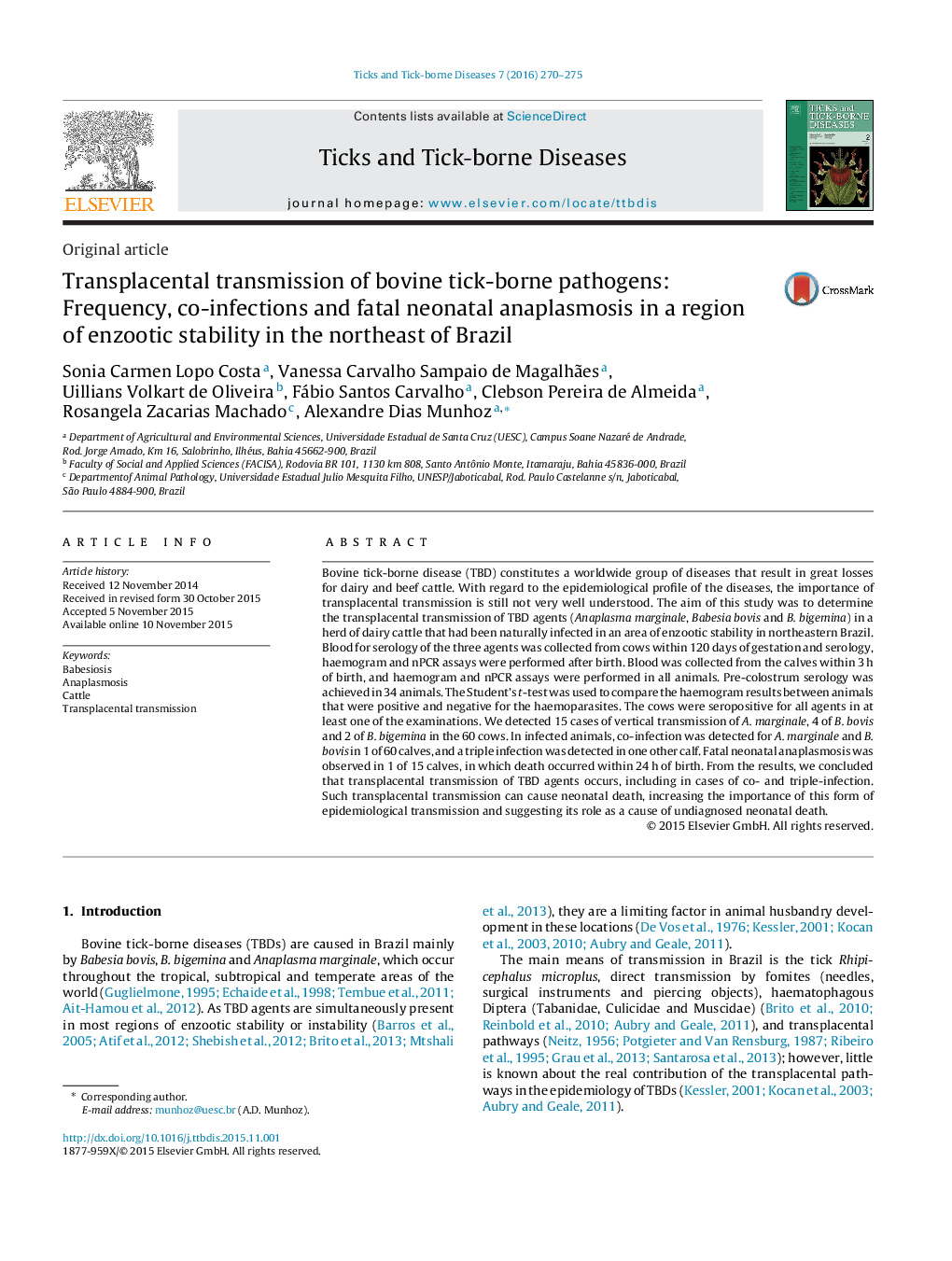| Article ID | Journal | Published Year | Pages | File Type |
|---|---|---|---|---|
| 5807109 | Ticks and Tick-borne Diseases | 2016 | 6 Pages |
Bovine tick-borne disease (TBD) constitutes a worldwide group of diseases that result in great losses for dairy and beef cattle. With regard to the epidemiological profile of the diseases, the importance of transplacental transmission is still not very well understood. The aim of this study was to determine the transplacental transmission of TBD agents (Anaplasma marginale, Babesia bovis and B. bigemina) in a herd of dairy cattle that had been naturally infected in an area of enzootic stability in northeastern Brazil. Blood for serology of the three agents was collected from cows within 120 days of gestation and serology, haemogram and nPCR assays were performed after birth. Blood was collected from the calves within 3Â h of birth, and haemogram and nPCR assays were performed in all animals. Pre-colostrum serology was achieved in 34 animals. The Student's t-test was used to compare the haemogram results between animals that were positive and negative for the haemoparasites. The cows were seropositive for all agents in at least one of the examinations. We detected 15 cases of vertical transmission of A. marginale, 4 of B. bovis and 2 of B. bigemina in the 60 cows. In infected animals, co-infection was detected for A. marginale and B. bovis in 1 of 60 calves, and a triple infection was detected in one other calf. Fatal neonatal anaplasmosis was observed in 1 of 15 calves, in which death occurred within 24Â h of birth. From the results, we concluded that transplacental transmission of TBD agents occurs, including in cases of co- and triple-infection. Such transplacental transmission can cause neonatal death, increasing the importance of this form of epidemiological transmission and suggesting its role as a cause of undiagnosed neonatal death.
